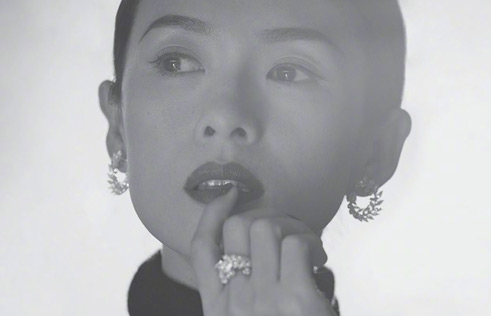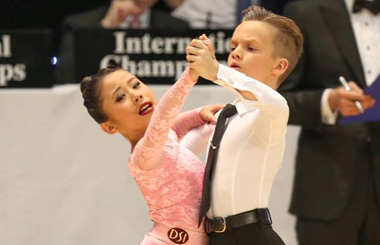Double Ninth Festival
The 9th day of the 9th lunar month is the traditional Chongyang Festival, or Double Ninth Festival. It usually falls in October in the Gregorian calendar.
In an ancient and mysterious book Yi Jing, or The Book of Changes, number "6" was thought to be of Yin character, meaning feminine or negative, while number "9" was thought to be Yang, meaning masculine or positive. So the number nine in both month and day create the Double Ninth Festival, or Chongyang Festival.
Chong in Chinese means "double." Also, as double ninth was pronounced the same as the word to signify "forever", both are "Jiu Jiu," the Chinese ancestors considered it an auspicious day worth celebration. That's why ancient Chinese began to celebrate this festival long time ago.
Wearing Cornel Twigs (Dogwood)
|
 |
The cornel (dogwood) is a species of evergreen arbor; it is heavy-scented plant whose fruit is edible and stock and leaves can be medicinal materials. They can expel insects, get rid of the humidity, help digestion and cure inner heat. It puts out purple flowers in spring and bears, in autumn, purplish-brown fruit that is sour, puckery and mild in nature.
The custom of wearing cornel twigs (dogwoods) was already very popular in the Tang Dynasty (618-907); it was made an official day – off for common people by an imperial edict. The ancient people believed that planting cornel twigs (dogwoods) on Double Ninth Festival could prevent diseases and avoid disasters. They also wear the cornel twigs (dogwoods) on arms or heads or put them in sachets. Most of people that follow the custom are women and children, and in some places men also wear them. In Song Dynasty, people sent each other colorful silk cut into cornel twigs (dogwoods) or chrysanthemum and wore them.
Enjoying Chrysanthemum Flowers
Chrysanthemum originated in China and was recorded in some Chinese books as early as the 5th century B.C. The flower was introduced, as imperial flower, into Japan in the Tang Dynasty. Then it was introduced into Britain in the 12th century, into the continent of Europe in the 17th century, and into the USA in the 19th century. Also known as “yellow flower”, chrysanthemum is of varied species in the composite family. Though its florescence lasts long, this perennial herb usually begins to bloom in the 9th lunar month, lending much festive flavor to the Double Ninth Day. That’s why the month is also referred to as “the month of chrysanthemum”.
The flower was favored by poets through the ages, because it is one of the seldom flowers that bloom in late autumn. It is said that Tao Yuanming, a famous poet of the Jin Dynasty, grew many species of chrysanthemum while he lived as hermit and the flower, when in full bloom, drew many of Tao’s relatives and friends. Huang Chao, leader of the peasant uprising in the Tang Dynasty, wrote a lot of poems about chrysanthemum, which were compiled into an anthology of Chrysanthemum and, even now, are oft-quoted. Du Fu, a great Tang Dynasty poet, wrote more than ten poems singing the praises of the flower.
Chinese folks were fond of enjoying chrysanthemum on the Double Ninth Day long before. Chrysanthemum blossom in the ninth lunar month have a beautiful name of “flower of longevity”. The custom of wearing chrysanthemum appeared in the Tang Dynasty already and was always very popular throughout the time afterwards. The entrances of some taverns in the Song Dynasty (960-1279) were decorated with the flowers on the day, which was supposed to incite customers’ desire for wine. Chrysanthemum displays were usually held immediately after the day in some regions of China in the Qing Dynasty. People in Beijing began to stick the chrysanthemums on doors and windows to “get rid of the bad luck and bring in the good ones” which is an alteration of the custom of wearing Chrysanthemum on head. At these displays people might enjoy chrysanthemum flowers, take part in poem-composing competitions or watch painters drawing paintings of chrysanthemum flowers. The display was often lively with a sea of visitors.
Eating Double Ninth Cake
The Double Ninth cake is also known as “chrysanthemum cake” or “flower cake”. It dates back to the Zhou Dynasty (the 11th century – 256 BC). It is said that the cake was originally prepared after autumn harvests for farmers to have a taste of what was just in season, and it gradually grew into the present cake for people to eat on the Double Ninth Day.
The cake was usually made of glutinous rice flour, millet flour or bean flour. In the Tang Dynasty, its surface was usually planted with a small pennant of multi-colored paper and bore at its center the Chinese character “ling” (order). The Double Ninth cake in the Song Dynasty was usually made with great care a few days before the Double Ninth Day, its surface planted with colored pennants and inlaid with Chinese chestnuts, ginkgo seeds, pine nut kernels and pomegranate seeds.
It was a nice festive present for relatives or friends. In the Ming Dynasty, the imperial families customarily began to eat the cake early on the first day of the 9th lunar month to mark the festival, and the common people usually enjoyed with their married daughters the festive cake, which was basin-sized and covered with two or three layers of jujubes. The cake in the Qing Dynasty was made like a 9-storied pagoda, which was topped with two sheep images made of dough. The cake, so made, was called Chong Yang Gao in Chinese, which means Double Ninth cake as “Chong” means double, “Yang” dichotomously suggests nine and sheep, and “Gao” means cake. Also, because “Gao” (cake) shares the pronunciation with “Gao” (high, tall), people want to get a higher position in their life through having Gao on the Double Ninth Day.


















